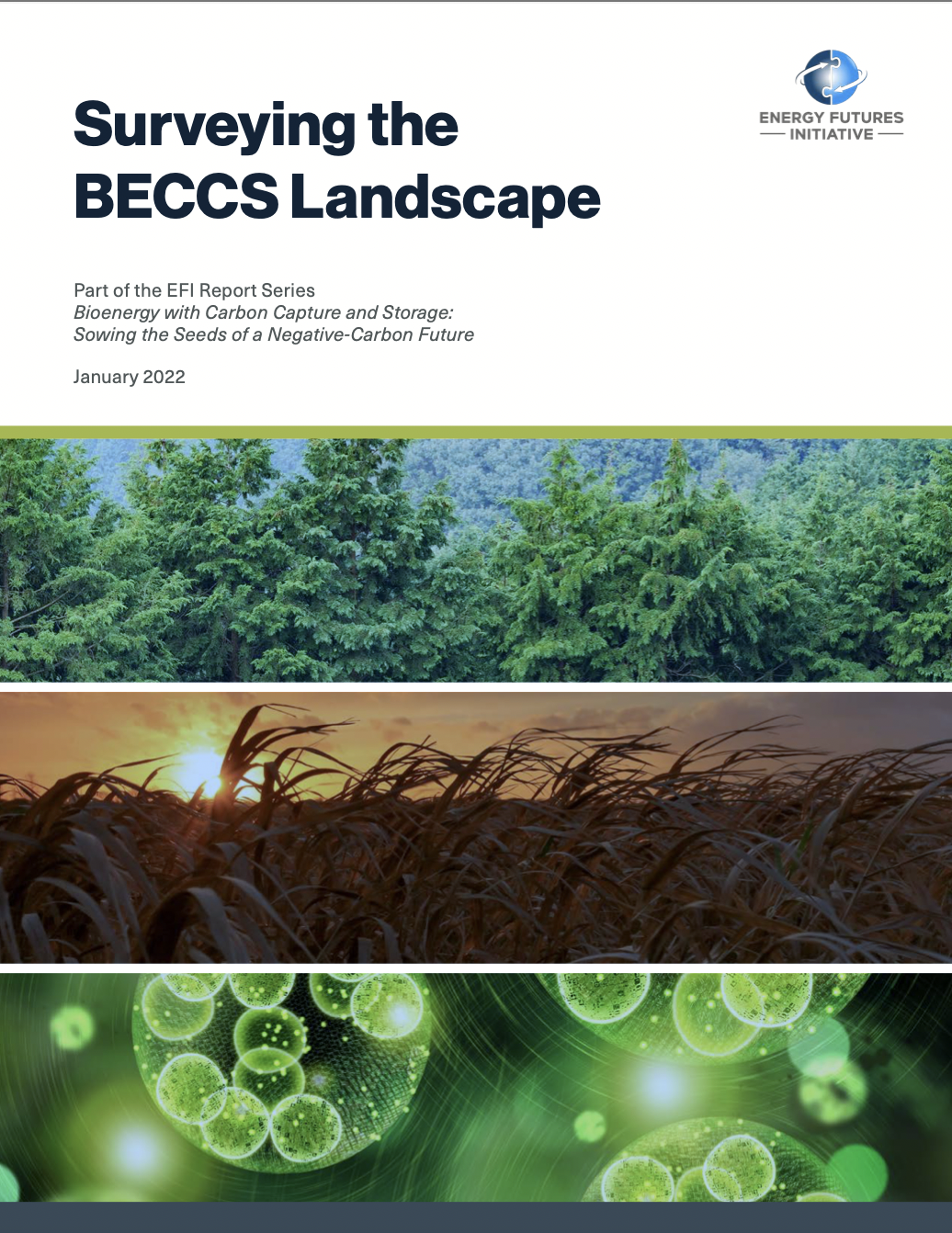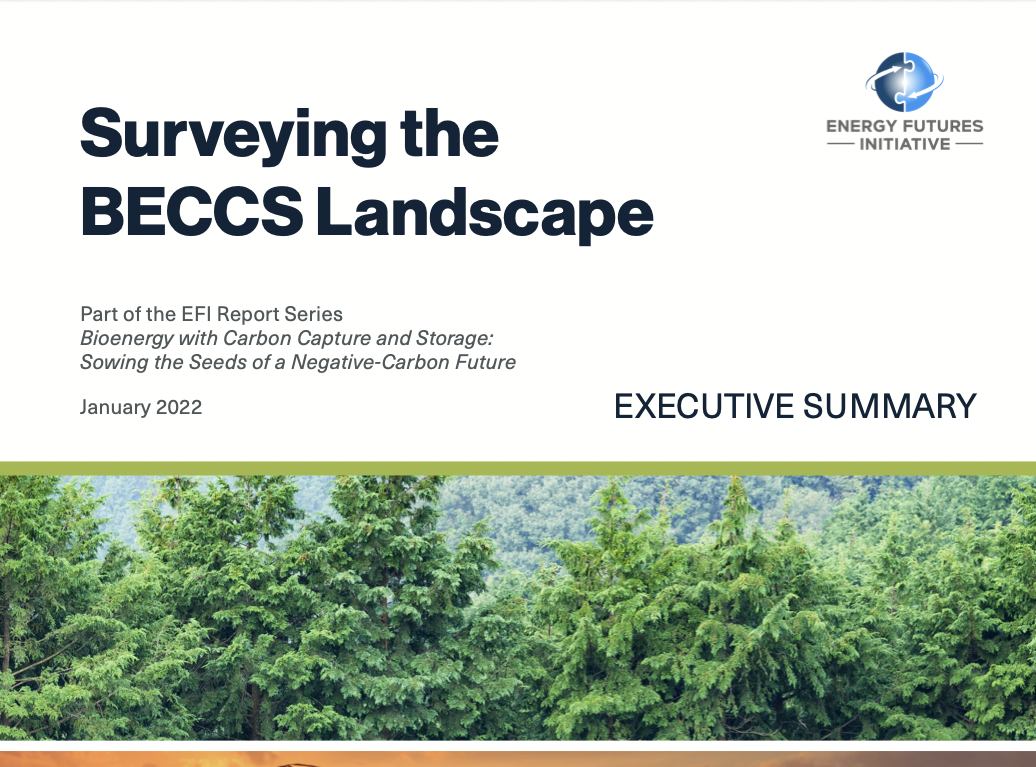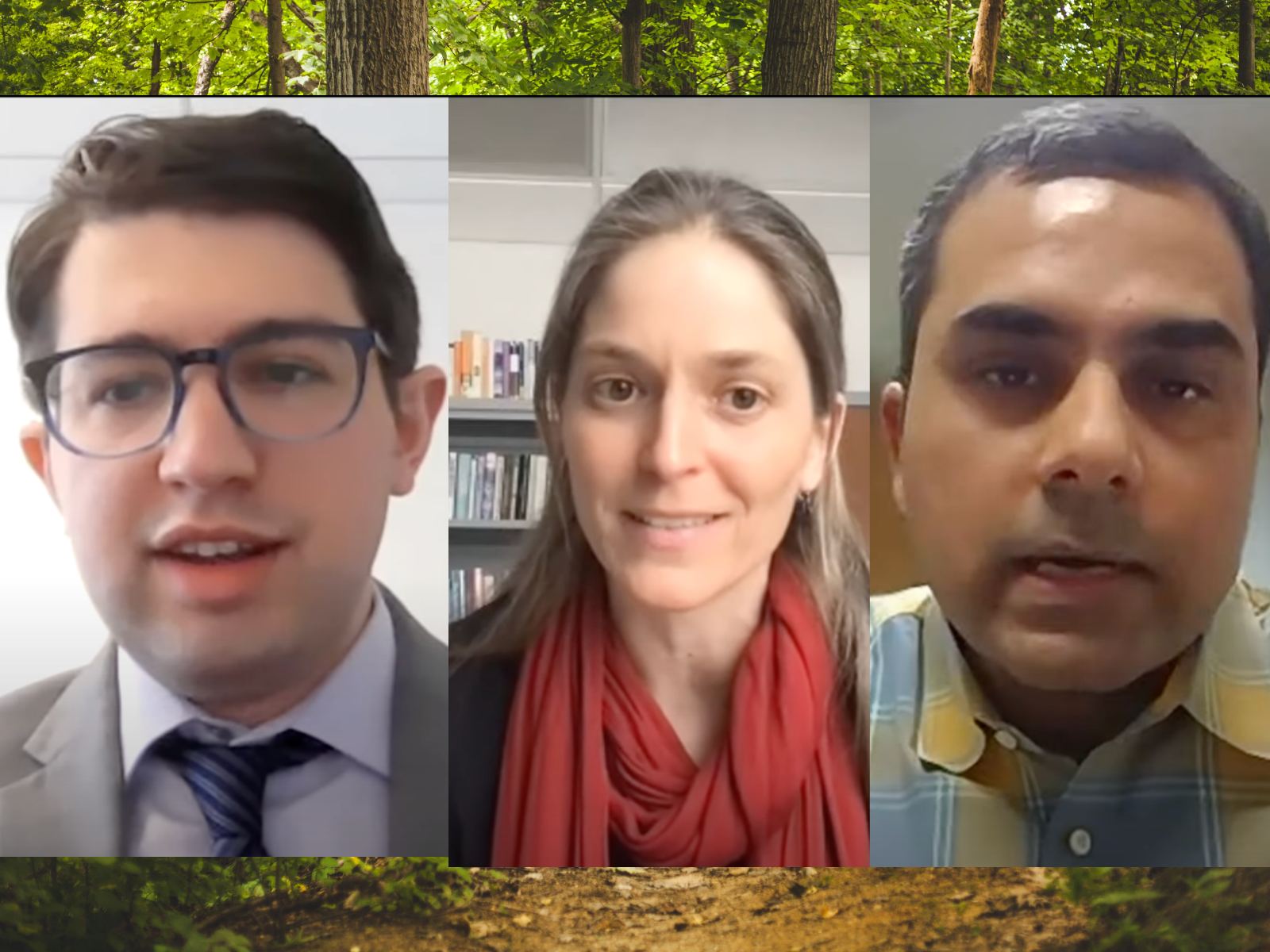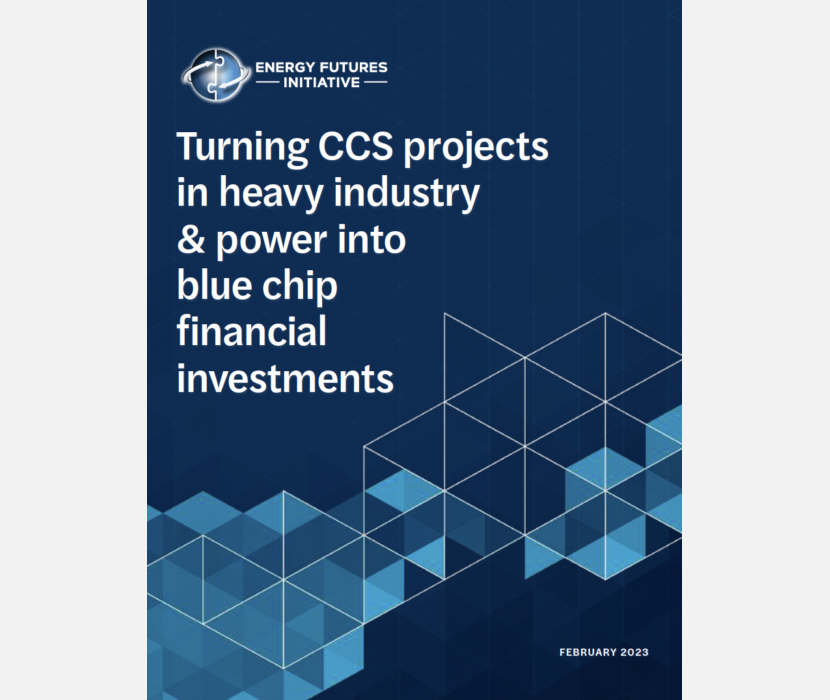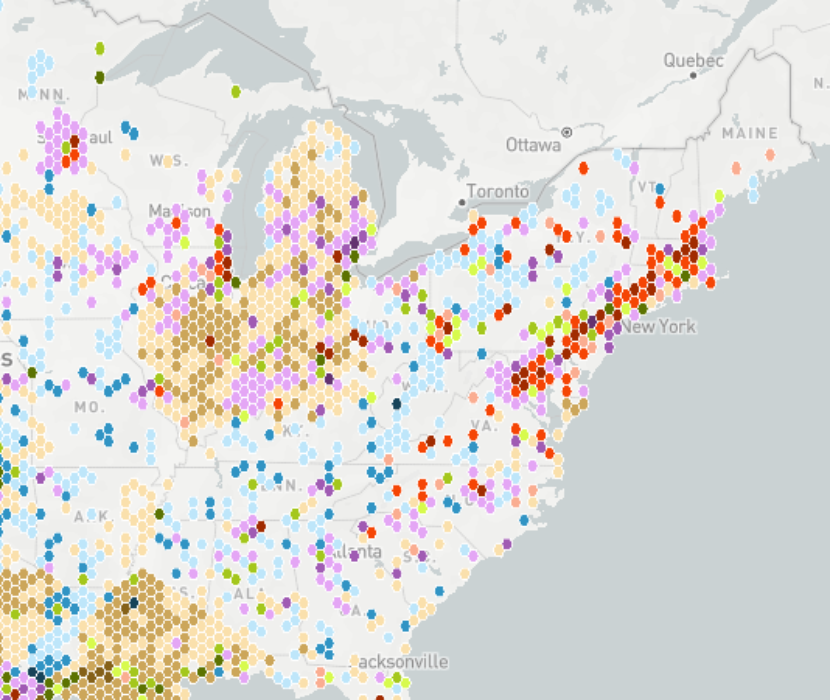Surveying the BECCS Landscape (January 2022) features a comprehensive literature review of more than 300 sources on the challenges and opportunities that lie ahead of growing a bioenergy with carbon capture and storage (BECCS) industry. BECCS is a broad set of systems that integrate production of energy (e.g., electricity, fuel) from biological material with the capture and long-term storage of carbon. The carbon can then either be stored safely in the Earth or repurposed. This report is the first phase of an Energy Futures Initiative (EFI) study on the potential contributions of BECCS in achieving the U.S. goal of net-zero greenhouse gas emissions by midcentury: “Bioenergy with Carbon Capture and Storage: Sowing the Seeds of a Negative-Carbon Future.” This report defines BECCS and its component parts; discusses the current state of BECCS and associated industries in the United States; and identifies the opportunities and challenges for BECCS.
The Intergovernmental Panel on Climate Change (IPCC) identified carbon removal as necessary to stave off the most catastrophic effects of climate change. As noted in the report, BECCS is most frequently factored as the carbon removal technology for the Integrated Assessment Models by the IPCC and the International Energy Agency. This is due to its relative cost efficiency and high long-term carbon capture and storage potential. However, elements of the literature are inconsistent, including the lack of a unanimous definition of BECCS. Further, wide ranges of estimates exist, such as for the cost of a BECCS project ($20 per metric ton to $400 per metric ton) and its capacity to reduce emissions (6%–36% of the net-zero by 2050 U.S. goal). While BECCS can potentially decarbonize numerous sectors, including agriculture, forestry, electricity, waste, and industry, BECCS deployment in practice has been limited, and the actual emissions reduction potential of a given project depends on the project’s exact configuration, given the varying technical potential of BECCS projects in different geographic regions.
The report produced nine major conclusions about challenges and opportunities for BECCS deployment in the United States, including these five:
- Greenhouse gas accounting does not consistently track BECCS emissions and removal accurately.
- There is opportunity for rural economic development through some BECCS pathways.
- There are environmental justice concerns about siting in vulnerable communities, and air, water, and noise pollution impacts.
- There is an opportunity to address BECCS through existing federal programs and policies.
- A national BECCS industry would require expanded biomass supply chains and carbon dioxide infrastructure. It’s likely that other carbon removal methods can use the same infrastructure, making this expansion part of a more efficient climate solution.
The findings of this literature review inform the second phase of EFI’s BECCS study, which involves a deeper dive analysis into the specific issues through commissioned white papers and an expert workshop. The goal of the entire BECCS study is to develop a comprehensive national strategy and policy roadmap for BECCS.
Supplemental Material
Related Content
(Share this post with others.)


